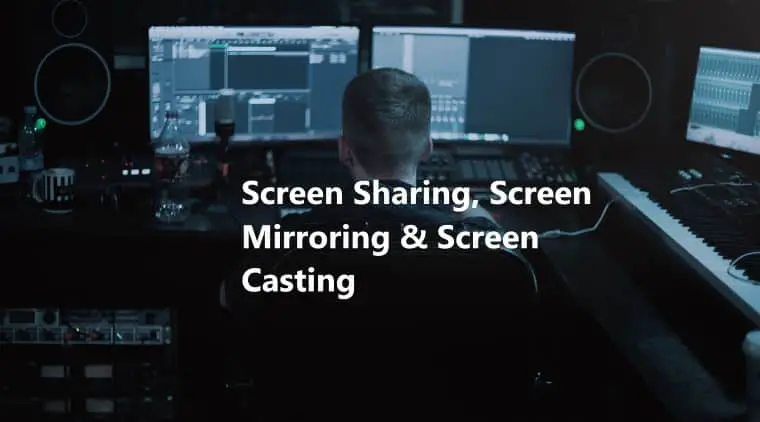Maybe you want to share the content on your phone or computer with your colleagues or friends or show what you see on your device on a bigger screen. Thanks to technology, everything is possible today. However, you might be confused with all the tech jargon.
Screen Sharing, Screen Mirroring & Screen Casting
You may come across terms like screen sharing, screen casting, and screen mirroring. Unless you have to share/cast your screen regularly or are tech-savvy, you may not be fully aware of the meaning and differences between these terms. Since they have the term ‘screen,’ you know it has something to do with your device’s screen.

Do you want to know the meaning of the screen-related tech jargon? How are they different? Continue reading.
Screen Mirroring
Screen mirroring duplicates the exact thing you see on your device’s content to another device or screen. You can mirror your screen or display using an HDMI cable or the almost-extinct VGA cable. Alternatively, you can do wireless screen mirroring with devices like Screenbeam Mini2.
To successfully mirror your screen, you need a monitor or TV supporting this technology. This means that the other device or screen must be able to receive content via in-built technology like Mirecast or AirPlay.
When you mirror the screen, you do not need Wi-Fi. This is because screen mirroring creates a wireless peer-to-peer connection with the display that supports this function. For instance, if you wish to mirror your streaming platforms from your smartphone onto your smart TV, you do not need an Internet connection. If your smart TV supports screen mirroring, you can do so.
Screen mirroring is particularly used during in-person settings as it allows the presenter to show content from a device to a larger screen. This allows the entire room to see what’s on your device.
If you wish to learn how to mirror your iPhone’s screen to your TV, click https://setapp.com/how-to/screen-mirroring-iphone-to-tv. As for mirroring your Android screen to your TV, you can do it via the Google Home application.

Screen Sharing
Screen sharing is not the same as screen mirroring, except where the content will be displayed. Screen sharing displays content from one device to another in a remote or separate location.
Screen mirroring, on the other hand, displayed content from one device to another in the same room.
Although you can also share a screen with another device in the same room, the technology allows you to share it with anyone, anywhere in the world. Of course, the sender and receiver must have compatible systems and the right screen sharing software.
Screen sharing comes in handy for teaching students remotely, sharing or collaborating content with team members working on the same project, troubleshooting IT problems remotely, etc. You can successfully share your screen using video conferencing programs.
Screen Casting
Screen casting is pretty similar to screen mirroring, but there’s a small difference. When the content is cast onto another screen display, you will not see the content on both devices. This means that if you cast content from your phone to your TV, you can use your phone for other tasks. The content will only be on your TV, and you can use the remote to control what you see.
You can screen cast using cutting-edge technology like Google’s Chromecast and other similar streaming apps and devices. Once the content is cast onto your television, you can control it from your TV and not from your phone.
Screen casting is an ideal option when you want to see content on a larger screen. For instance, watching YouTube videos or playing a game on your phone that you want to be seen on a larger screen.
Casting helps you to view content on a bigger and better display.
Difference Between Screen Sharing, Screen Mirroring & Screen Casting
Recapping the difference between screen mirroring, casting and sharing
| Screen mirroring | Screen sharing | Screen casting |
| Screen mirroring involves what’s on your device’s screen to a projector or TV via a wireless or cable connection. The same content is displayed on both devices at the same time. | Screen sharing is mirroring your screen on another person’s display and it can be done remotely. It requires both the sender and the receiver to use the same software and compatible systems. | Screen casting is not the same as screen mirroring. When the content is cast from your phone or computer to your TV, the content will no longer be seen on the phone or computer. Also, once the content is cast to the TV, you can control it from the TV and not your phone/computer. |
Conclusion
Now you know how screen mirroring, casting and sharing is different from each other. This will help you to use the correct technology wherever needed and prevent you from screen mirroring when you need to screen share.

